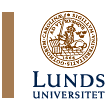

|
Panel No. 33Panel Title: Ethnic Cleansing, Migration, and Resettlement: Partition & Post-Partition ExperiencesConvenor: Ishtiaq
Ahmed, Associate Professor, Dept of Political Science, Stockholm
University, Sweden Thursday 8 July, 8–12 & 13–18 Panel Abstract: The panel approaches the
1947 Partition of India through two separate but interlinked themes.The
first focuses on the issue of migration and refugee resettlement
in a series of localised case studies of such cities as Delhi, Lahore,
Amritsar, Ludhiana and Faisalabad. The implications of partition
for political development will also be addressed with reference
to UP”s post-independence politics. The original research currently
being generated in these areas will deepen the ”new history”
approach to Partition and further deconstruct communal and nationalist
representations. This opening session of three papers will be chaired
by Professor Ian Talbot
Papers accepted for presentation in the panel:Morning session, headed by Ian TalbotPaper Giver 1: Pippa Virdee, Centre for South Asian Studies, Coventry University. UK Paper 1 Title: Migration and Post-Partition Resettlement in Lyallpur: The Impact of Refugee Labour Paper Abstract: To date very little work has been done on comparing the experiences of refugee labour as a result of the 1947 partition of the Punjab. This localised case study which is part of a wider comparative work on Ludhiana and Lyallpur focuses on the extent to which the migration of Muslim labour to Lyallpur (modern day Faisalabad) in 1947 played a role in the city’s subsequent economic importance as a centre of textile manufacture. Paper Giver 2: Gurpreet Maini, Punjab Bhavan, Delhi India Paper 2: Economic Vicissitudes of a City Viewed from a Border Lens: Partition, Conflict, Samjhauta and SAFTA
Paper Abstract: Amritsar’s commercial and economic
importance was undermined by the loss of skilled Muslim labour and
by its precarious border situation following partition. Nor was
it accorded the administrative importance that has enabled its neighbour
Lahore to overcome its border situation. It has thus become dependent
on Indo-Pakistan rapprochement and regional economic cooperation
for its future prosperity. The former is symbolized by the Samjhauta
Express, the latter in the agreement reached at the South Asian
association for Regional Cooperation summit in Islamabad to create
the South Asia Free Trade Area. Paper Giver 3: Yasmin Khan, St. Antony’s College, Oxford University UK Paper 3: Out of Control? Partition Violence and State Responses, 1947–48 Paper Abstract: In some districts of Uttar Pradesh in 1947, violence between religious communities became very intense. Although this was not comparable to the4 scale of violence in the Punjab, the UP violence was of significant magnitude. Yet it has rarely been studied. This paper examines the nature of communal violence in UP from 1947-8. It raises the questions, which parts of UP were affected? What sort of violence occurred, how was it organized and by whom? Secondly, this paper seeks to analyze the responses of the newly independent Indian state, both at the central and state level to this violence. For instance, what legislation was passed in response to the crisis, how were riots controlled and managed and how was peace encouraged? At the heart of this analysis are questions about the colonial inheritance bequeathed to the UP government in its management of communal violence, and new attitudes on the part of the government as it sought to establish its authority in the testing months following partition and independence. Paper Giver 4: Anasua Basu Raychaudhury, Centre for the Study of developing Societies Delhi, India Paper 4: Life After Partition A Study on the Reconstruction of Lives in West Bengal
Paper Abstract: The partition of Bengal not only killed
thousands of people, but also uprooted and displaced millions from
their traditional homeland. If the better-off people from East Pakistan
could reconstruct their lives with relative ease in West Bengal,
for those belonging to the middle class and lower middle class,
it was almost impossible. Many of them had to spend ten, fifteen
or twenty years in refugee camps before they could imagine a better
life. Those who did not go to the camps and settled in the jabar
dakhar colonies on the margins of Calcutta also continued with a
hand-to-mouth existence for many years. Many of them could never
return to their traditional family occupations and therefore felt
a sense of alienation and irreparable occupational loss even after
partial rehabilitation. Full paper to be downloaded (as a pdf-file) Paper Giver 5: Ravinder Kaur, Danish Institute for International Studies, Copenhagen, and International Development Studies, Roskilde University Centre Paper 5 Title: Claims of Locality: At Home in Delhi Paper Abstract: Any claim to locality by the newcomers involves two distinct processes, one, of creating an existential space for themselves in the new place, and two, of bringing the relationship with the old place to a conclusion. For the Punjabi refugees this involved (a) contesting and negotiating for social, political and economic space with the local Delhi residents and (b) coming to terms with the loss of homeland which is now subsumed by the “enemy” state of Pakistan. One of the most remarkable characteristics of the refugee resettlement process in Delhi is the absence of any noticeable local-refugee conflicts. The emergence of separatist identity among Muslim refugees in Karachi stands in sharp contrast to the Hindu and Sikh refugees in Delhi who, in comparison, effortlessly claimed membership to the Indian citizenry. In each instance of population movement and resettlement, the migrants have to compete with the local residents to create a space for themselves. However in Delhi, as will follow, the migrants not only created a niche for themselves but also successfully edged out the local residents from the cityscape. It is the local-refugee dialectic and the entire process of refugees successfully claiming the locality which forms the core of this paper. Afternoon Session, headed by Ishtiaq AhmedPaper Giver 6: Dr Ravi Singh, Dept. of Geography, Kisan PG College, Bahraich, India Paper 6 Title: Life during Partition: A Literary Geographic Narrative of Rahi Masoom Raza’s Adha Gaon and Bhishma Sahni’s Tamas Paper Abstract: Partition of then undivided India in 1947 is a major event in the modern history of South Asia. Consequent upon it, the land and people stood divided after mid-August 1947. Political campaigns for (and also against) the idea of two-nation theory though preceded this event, but as a matter of fact that the common mass at large was unaware of the developments in this regard. Those who came to know about it were opposed to it to a great extent. Whenever the volunteers (of Muslim League) tried to propagate the so-called ‘logic for partition’ they could barely find a sizeable audience even among their Muslim brethren. After all who would like to abandon the land of our forefathers without any ‘real’ compelling reason. Despite all these, the ‘inevitable’ did happen. The dividing line got drawn, on a very true colonial basis – (communal) dominance. And, as the natural fallout – land, lives, and livings got divided. Suddenly people became strangers amidst own people, generations’ old ties were snapped away, every possible brutality against humanity was committed. From Chittagong to Karachi and beyond, communal passion ran high making the humanity twitch in agony. Still, the daily activities – food, fun, hate, love, sex…, went along. The present paper (re)explores this happening which affected the geographic and socio-cultural spaces, simultaneously. And, tries to map the daily life experiences as outlined in two novels, viz. Rahi Masoom Raza’s Adha Gaon (‘half village’), and Bhishm Sahani’s Tamas (‘darkness’). The former painting a typical north Indian village life co-inhabited by Hindus-Muslims; and, the later covering mainly the urban scene. Both tell the same tale but experiences take somewhat different routes. The narration contained in this paper tries to capture them in an analytical frame. Full paper to be downloaded (as a pdf-file) Paper Giver 7: Farhana Ibrahim, PhD Candidate, Department of Anthropology, Cornell University, USA Paper 7 Title: Unsettled boundaries: Negotiating identities on a Western Indian border Paper Abstract: This paper analyses the social and cultural consequences of selective migration and resettlement in Kachchh District of Gujarat. A massive earthquake in 2001 and state sponsored massacres against the province’s minority Muslim populations provide the frame within which this paper is located. Drawing on ethnographic research among Muslim pastoral nomadic groups, Harijans and adivasis who live along the Kachchh-Sind border, the paper addresses state-sanctioned rebuilding processes that were initiated after the earthquake. The pattern of village construction attempts to incorporate the Harijan and adivasis into the Hindu mainstream and noticeably away from their Muslim neighbours. The Harijan and adivasi cases are an instructive category for this analysis precisely because as a social group they unsettle the stark dichotomization between Hindu and Muslim. Historically well beyond the pale of caste Hinduism and living in close proximity with Muslims, borrowing some of the latter’s practices such as meat eating, they are “betwixt and between” the most salient religious fault line of the region which runs across a Hindu-Muslim axis. In practice neither fully one nor the other, their attempted location within regional discourses as Hindu is an important moment in the identity politics of the border, for it depicts with startling clarity the attempts to “purify” an anomalous population. Paper Giver 8: Meenakshi Chhabra, Lesley University, USA, and Anila Asghar, Harvard-Smithsonian Centre for Astrophysics, USA Paper 8 Title: Expanding Narratives Of Partition And Post-Partition – A Transformative Experience For The India–Pakistan Youth Paper Abstract: This paper seeks
to examine the coexistence process between Indian and Pakistani
youth who have been engaged with the Seeds of Peace, a non-profit
organization. 80 students from India and Pakistan (22 girls and
18 boys from each country) have attended summer camp in Maine since Full paper to be downloaded (as a pdf-file) Paper Giver 9: Ishtiaq Ahmed, Dept of Political Science, Stockholm University, Sweden Paper 9 Title: The Lahore riots of 1947 Paper Abstract: This paper seeks to identify the chronology of communal riots in Lahore during 1947. There are two alternative hypotheses that explain the Lahore riots: one, that a pre-meditated plan existed to drive out Hindus and Sikhs from Lahore; and two, that the expulsion of Hindus and Sikhs from Lahore was the result of a number of unexpected turn of events in which the Muslims began to gain the upper hand only gradually and therefore the expulsion of Hindus and Sikhs was the result of the balance of power shifted in favour of Muslims. In other words, no blueprint of an ethnically pure Muslim Lahore existed at any early point during 1947. The paper will draw upon the Hobbesian theory of the state of nature and combine it with psychological and sociological theories about group violence and the role of ideas and ideologies in political mobilization. Full paper to be downloaded (as a pdf-file)
SASNET - Swedish South Asian Studies Network/Lund
University
|

